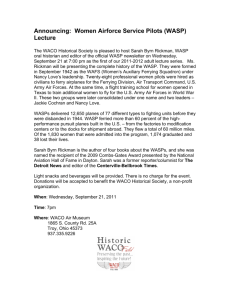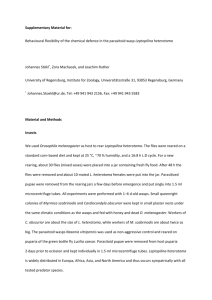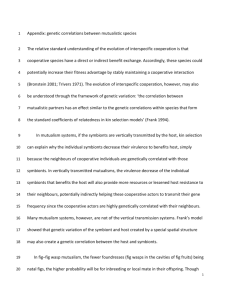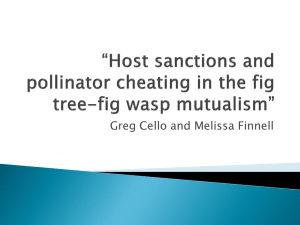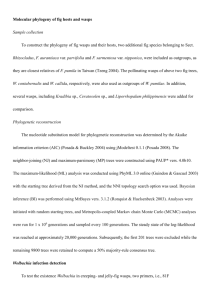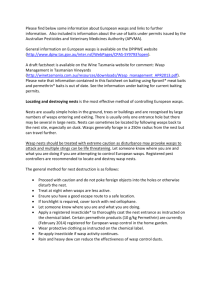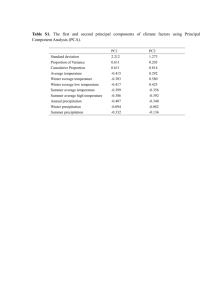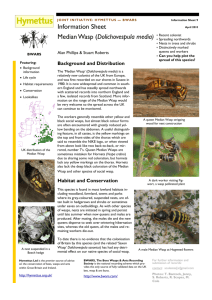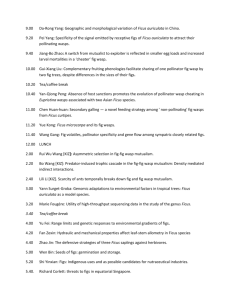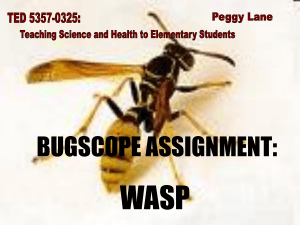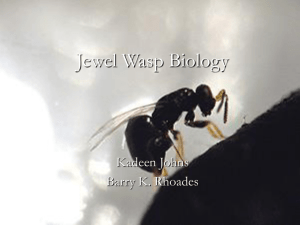BIOL501 Article Summary7
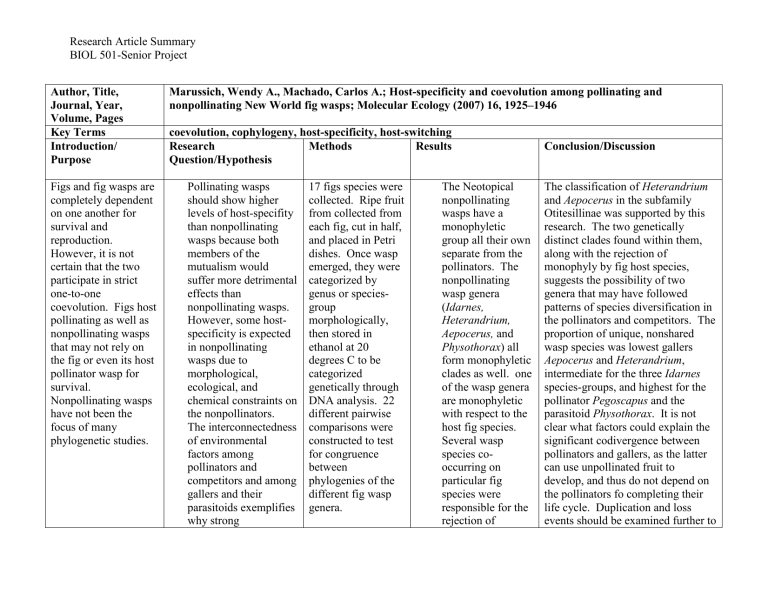
Research Article Summary
BIOL 501-Senior Project
Author, Title,
Journal, Year,
Volume, Pages
Key Terms
Introduction/
Purpose
Figs and fig wasps are completely dependent on one another for survival and reproduction.
However, it is not certain that the two participate in strict one-to-one coevolution. Figs host pollinating as well as nonpollinating wasps that may not rely on the fig or even its host pollinator wasp for survival.
Nonpollinating wasps have not been the focus of many phylogenetic studies.
Marussich, Wendy A., Machado, Carlos A.; Host-specificity and coevolution among pollinating and nonpollinating New World fig wasps; Molecular Ecology (2007) 16, 1925–1946 coevolution, cophylogeny, host-specificity, host-switching
Research
Question/Hypothesis
Pollinating wasps should show higher levels of host-specifity than nonpollinating wasps because both members of the mutualism would suffer more detrimental effects than nonpollinating wasps.
However, some hostspecificity is expected in nonpollinating wasps due to morphological, ecological, and chemical constraints on the nonpollinators.
The interconnectedness of environmental factors among pollinators and competitors and among gallers and their parasitoids exemplifies why strong
Methods
17 figs species were collected. Ripe fruit from collected from each fig, cut in half, and placed in Petri dishes. Once wasp emerged, they were categorized by genus or speciesgroup morphologically, then stored in ethanol at 20 degrees C to be categorized genetically through
DNA analysis. 22 different pairwise comparisons were constructed to test for congruence between phylogenies of the different fig wasp genera.
Results
The Neotopical nonpollinating wasps have a monophyletic group all their own separate from the pollinators. The nonpollinating wasp genera
( Idarnes,
Heterandrium,
Aepocerus, and
Physothorax ) all form monophyletic clades as well. one of the wasp genera are monophyletic with respect to the host fig species.
Several wasp species cooccurring on particular fig species were responsible for the rejection of
Conclusion/Discussion
The classification of Heterandrium and Aepocerus in the subfamily
Otitesillinae was supported by this research. The two genetically distinct clades found within them, along with the rejection of monophyly by fig host species, suggests the possibility of two genera that may have followed patterns of species diversification in the pollinators and competitors. The proportion of unique, nonshared wasp species was lowest gallers
Aepocerus and Heterandrium , intermediate for the three Idarnes species-groups, and highest for the pollinator Pegoscapus and the parasitoid Physothorax . It is not clear what factors could explain the significant codivergence between pollinators and gallers, as the latter can use unpollinated fruit to develop, and thus do not depend on the pollinators fo completing their life cycle. Duplication and loss events should be examined further to
Research Article Summary
BIOL 501-Senior Project phylogenetic congruence is expected between both pairs. monophyly. All wasp genera or species-groups contained wasp species that were shared across multiple fig species, and several fig species were host to multiple species of wasps from the same genus.
Strong evidence for host switching followed be cospeciation was obtained. determine their role in hostswitching.
